Art walk in Hämeenlinna
The Tawast Cycling Club planned an art bike tour in Hämeenlinna. For this blog, we detached the following sights located in the centre of the city into a separate art walk. The route tours the centre of Hämeenlinna and presents delightful works of art located in parks and in the middle of buildings. You can also find fascinating stories and interesting assignments related to some of these works in the VIKKE mobile game pilot. The route begins from and ends at the railway station, so you can take a train to Hämeenlinna even from further away and come tour the local works of art.
Hämeenlinna railway station
13200 Hämeenlinna
Finland’s first railway line was built between Helsinki and Hämeenlinna in 1862. The present Hämeenlinna railway station building was completed in 1921. The previous station building burned down in the civil war when a grenade hit an ammunition train and it exploded. You can admire the architecture of the building both in the indoor waiting area and out on the platform. On the station wall, there is a memorial plaque and a memorial relief for war children taken to Sweden during World War II, designed by Jaakko Veuro. The old steam locomotive bell in front of the building serves as a monument to rail traffic.
Huojuva askel, Pekka Kauhanen 1990
Courtyard of Hämeenlinna Art Museum, Viipurintie 2
The work “Huojuva askel” (A Wavering Step), located in the courtyard of the Hämeenlinna Art Museum, is part of artist Pekka Kauhanen’s Step series with such other works as “A Fragrant Step” and “A Gothic Step”. The names of the sculptures derive from the composition “November Steps” by the Japanese composer Takemitsu. According to the artist, A Wavering Step is a work from a period of transformation, which has similar features as the memorial of President Kekkonen erected in Kajaani in 1988. Kauhanen characterised the controversial hourglass-like and twisted shapes of his works from that era as “statues of Kekkonen’s time and mind”.
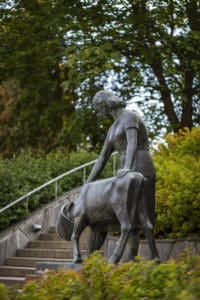
Vasikanjuottaja was the first public sculpture in the City of Hämeenlinna.
Vasikanjuottaja, Aukusti Veuro 1954
In front of Hämeenlinna Art Museum, Viipurintie 2
Next to the steps leading to the Hämeenlinna Art Museum stands the work of art “Vasikanjuottaja” (A Girl Feeding a Calf), paying homage to the achievements of rural women in the field of animal husbandry. In the work, a young girl is feeding a calf from a bucket. The unveiling ceremony of the statue was held outside the art museum on 29 November 1954, and it was the first public sculpture in the City of Hämeenlinna. It remained the last work of art made by sculptor Aukusti Veuro.
Hämeenlinnan ennen ja nyt, Jaakko Veuro 1967
Ystävyydenpuisto, Arvi Kariston katu
Sculptor Jaakko Veuro’s work “Hämeenlinna ennen ja nyt” (Hämeenlinna before and now) stands in Ystävyydenpuisto park. The work describes means of livelihood and life in Hämeenlinna at the turn of the 19th century and celebrates the local artisans and merchants. The money for the sculpture was willed by Arvi A. Karisto. The sculpture consists of three relief-style bronze slabs stacked on top of each other. In the Ystävyydenpuisto park, there is a fountain with three parts on a square surrounded by a circle of stones. The plaques mounted on some of the stones feature the names of Hämeenlinna’s twin towns.
A monument for the guild of tanners, Oskari Jauhiainen 1958
Palokunnankatu 15
Oskari Jauhiainen’s work “A monument for the guild of tanners”, which stands outside the former post office, is also known by the name The Tanner. The sculpture was made in honour of the old professional guilds. When the post office was being built, old tanned leather and tanning vats were found in the layers of earth on the site. The contractors organised a sculpture competition, which was won by Oskari Jauhiainen. In the sculpture, the tanner is holding hides on one arm and leaning on his smoothing iron with the other hand.
Tunnel improved by art, 2017
Paasikiventie underpass at Kaivokatu in Hämeenlinna, next to Tavastila shopping centre
Ars Häme collaborated with local artists to organise art-based guidance for young people in the Toimi project. In the project, involving several young people, the Paasikiventie underpass tunnel was enlivened with art under the guidance of artists from Hämeenlinna. The wall painting was part of the City of Hämeenlinna’s Finland 100 programme, where the focus was on listening to children and young people.
Wall paintings, 2017
Goodman, exterior wall on the side of Kaivokatu, Kaivokatu 7
The exterior wall of Goodman is adorned with a series of almost 18 metres high wall paintings. This work was also part of the Finland 100 programme and it was implemented in the Toimi project. Young people were given a chance to paint their own vision of Finland’s 100-year history.
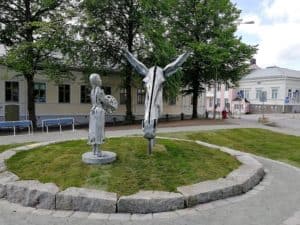
Sota ja rakkaus statue was unveiled in Hämeenlinna in the summer of 2019.
Sota ja rakkaus, Tiina Torkkeli 2018
Kirjastokatu 1
“Sota ja rakkaus” (War and Love), themed around the women’s voluntary paramilitary service, is a sculpture made by Tiina Torkkeli of zinc plated recycled metal. The sculpture features a veterinary member of women’s voluntary paramilitary service and a head of a horse.
Nuoruus, Viktor Jansson 1936
Pikkutorinkuja
The model of Viktor Jansson’s work “Nuoruus” (Youth) was his daughter Tove Jansson, the creator of the Moomin characters. Originally, the gypsum model of the sculpture was donated to the City of Hämeenlinna from Tove Jansson’s estate. Kummila Oy cast the work in bronze, and the unveiling ceremony was held in June 1967.
Kohtaaminen, Pertti Kukkonen 2004
Raatihuoneenkatu 27
Pertti Kukkonen’s work “Kohtaaminen” (Encounter), found on the pedestrian street of Raatihuoneenkatu, consists of two pieces made of copper concrete, leaning towards each other. Before them, they have two water basins with their surfaces falling and rising slowly. As they rise, they momentarily become one.
Linjaali, Olli Jalonen, Riitta Jalonen ja Marjukka Vainio 2004
Raatihuoneenkatu 25
On the pedestrian street of Raatihuoneenkatu, there is a work of art with three parts, “Linjaali”, made on the surface of the street in front of benches. The work combines Marjukka Vainio’s image with a plant motif in three parts and Riitta and Olli Jalonen’s texts. The work was made using the graphic concrete method.
Ilves, Gunnar Finne 1920-luku
Raatihuoneenkatu 17
Sculptor Gunnar Finne’s Lynx statue stands on a column head that is stylized as a top of a pine tree. The statue cast in bronze is gold-plated and has been marked with similar patterns as lynx fur. The sculpture was sponsored by Finnish Savings Bank of Hämeenlinna and erected by the main entrance of the bank.
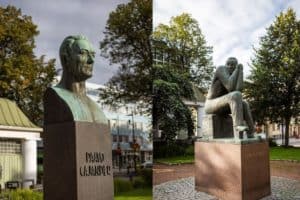
In Kirkkopuisto Park you can admire statues of Paavo Cajander and Larin-Kyösti in addition to pavilions and a fountain.
Larin Kyösti, Mikko Hovi 1962
Kirkkopuisto, Raatihuoneenkatu
The statue of Larin-Kyösti, made by his friend sculptor Mikko Hovi, displays the poet from Hämeenlinna in deep thought. The statue stands at the market park end of Raatihuoneenkatu.
Paavo Cajander, Alpo Sailo 1933
Kirkkopuisto, Hallituskatu
At the side of Hallituskatu in the Kirkkopuisto park stands the statue of Paavo Cajander, a poet and a translator from Hämeenlinna, sculpted by Alpo Sailo. The bust in bronze resembles a classical Roman sculpture.
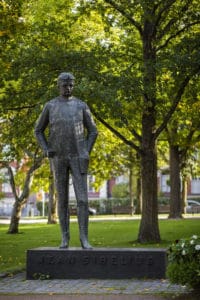
Jean Sibeliuksen patsas seisoo keskellä Sibeliuksenpuistoa.
Jean Sibelius (Young Sibelius), Kain Tapper 1964
Sibeliuspuisto, Birger Jaarlin katu 8
The festive unveiling of the statue of the master composer Jean Sibelius was held on Sibelius’ Birthday, 8 December 1964. The statue was unveiled by the President of the Republic, Urho Kekkonen. At the same time as the statue was erected in the park, the name of the park, previously known as the Tähtipuisto park, was changed to Sibeliuksenpuisto park. In addition to the statue cast in bronze, sculptor Kain Tapper designed the general appearance of the park with architecture student Sakari Laitinen. Exactly 50 years later, on 8 December 2014, the first musical park in Finland was opened in the Sibeliuksenpuisto park. Some of the benches in the park are fitted with a motion sensor, so that they start playing pieces of Sibelius’ The Tree Suite when someone sits on them, while a spotlight lights up the tree in question.
Kullervo, Nina Terno 1983
Lukiokatu 2
Sculptor Nina Terno’s bronze work “Kullervo” depicts how Kullervo Kalervonpoika seduces a young maiden. The work is a tribute to past generations, the creators and collectors of folklore.
A monument to the inauguration of the Maaherranpuisto park
Maaherranpuisto, Lukiokatu
The fountain with a floating stone ball is a monument to the inauguration of the Maaherranpuisto park in 1997. The work was made by Savitaipaleen kiviveistämö stoneworks. The ball rotates in the fountain, floating on water, and the direction of rotation can be changed by rotating the ball in another direction.
Herääminen, Into Saxelin mid-1920s
Laivarannanpuisto, Arvi Kariston katu
In the Laivarannapuisto park, the stone sculpture of a young lady, “The Awakening” by Into Saxelin from the 1920s, was integrated into the water lily pool designed by Olavi Sahlberg. The sculpture is made of red granite of Vehmaa.
Time Concrete, Rúrí 1986
Mahlianpuisto, 13200 Hämeenlinna
On the shore of Lake Vanajavesi, near Hotel Vaakuna, there is an environmental artwork called Time Concrete. The work consists of six concrete elements, reminiscent of a ruined building and collapsed columns. The work of the Icelandic environmental artist Rúrí was moved from Helsinki to Hämeenlinna in 1989.
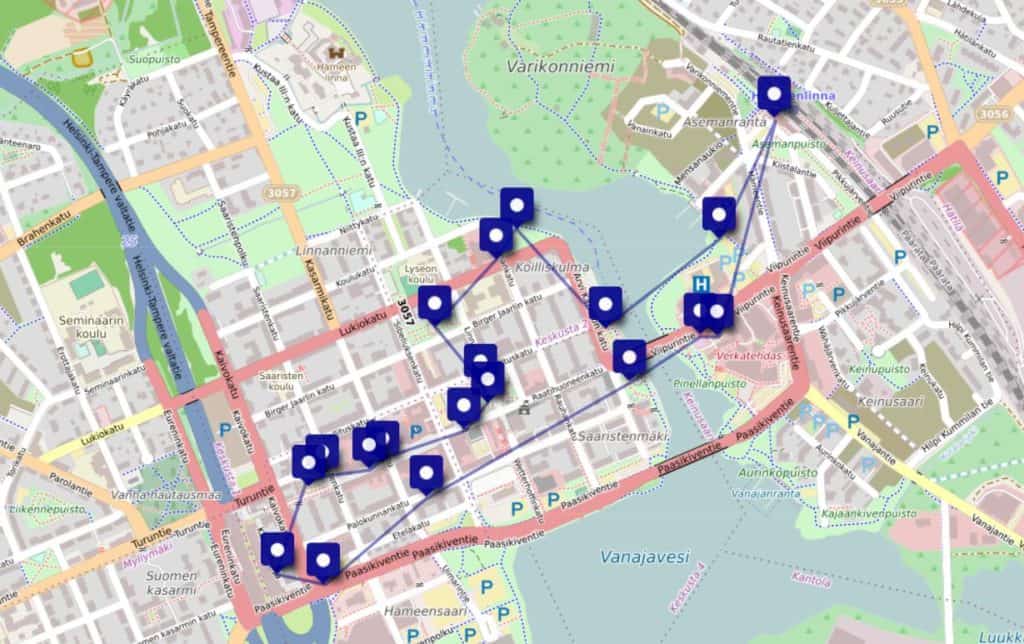
The starting and ending point of the art walk is at the Railway Station. The tour goes around the center of Hämeenlinna.

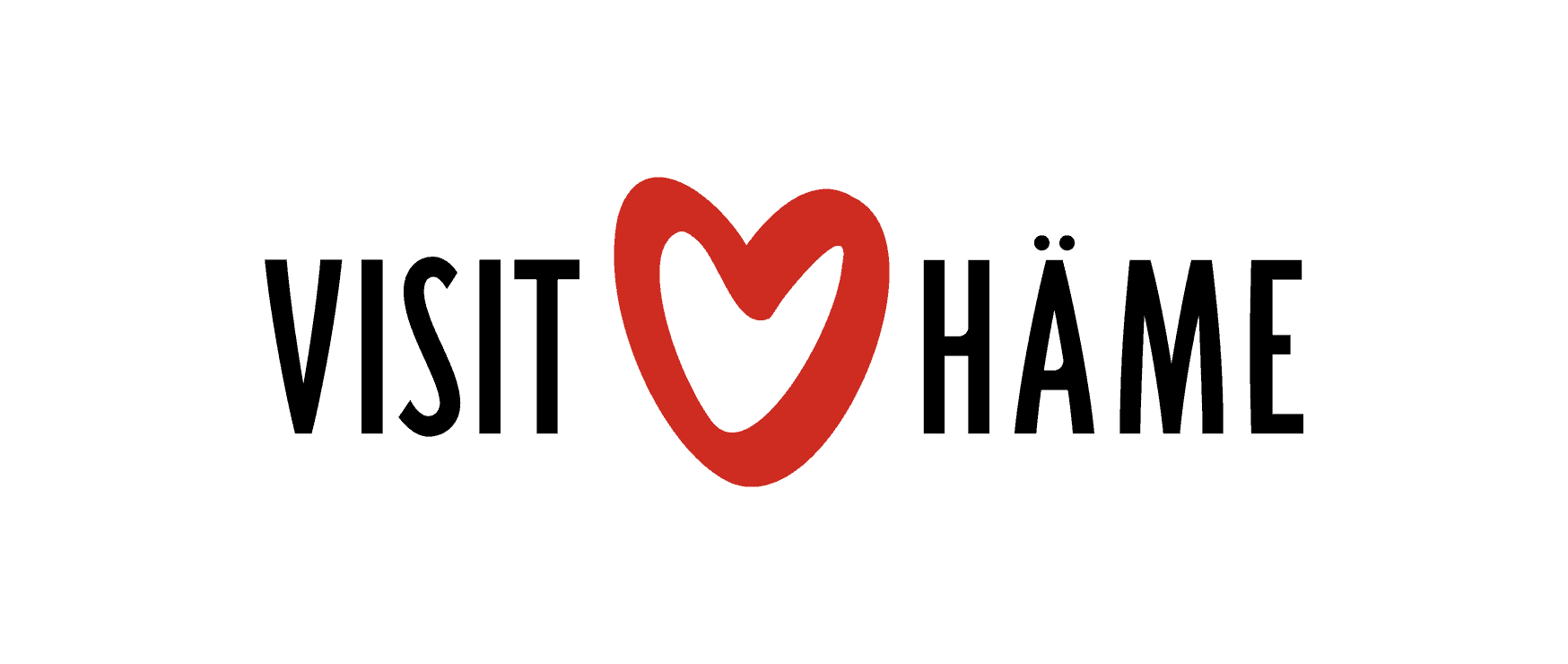
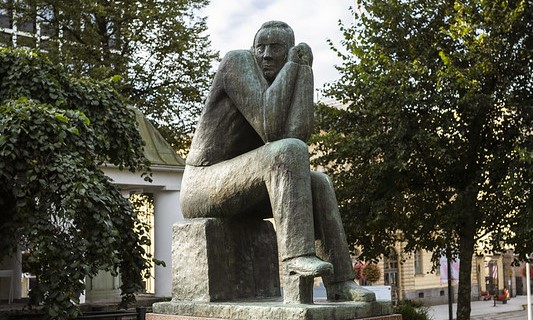
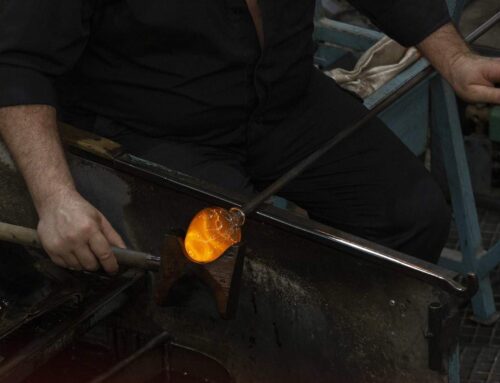
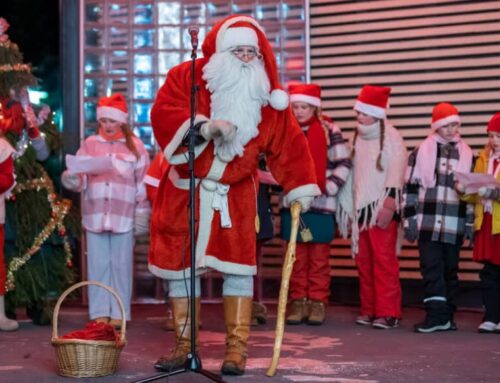
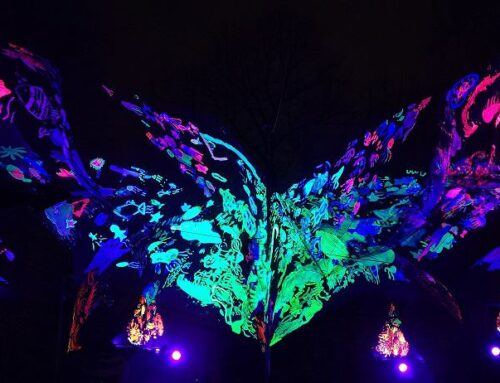
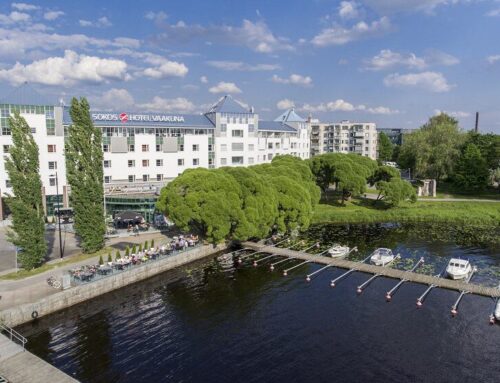
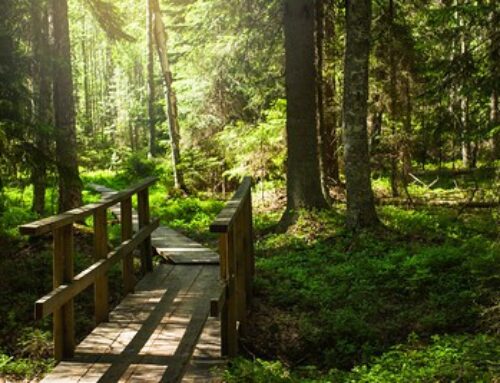
Leave A Comment
You must be logged in to post a comment.